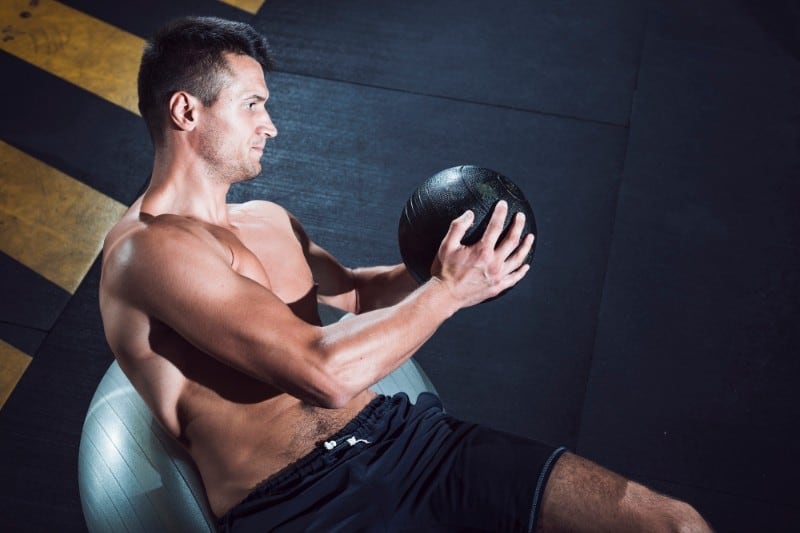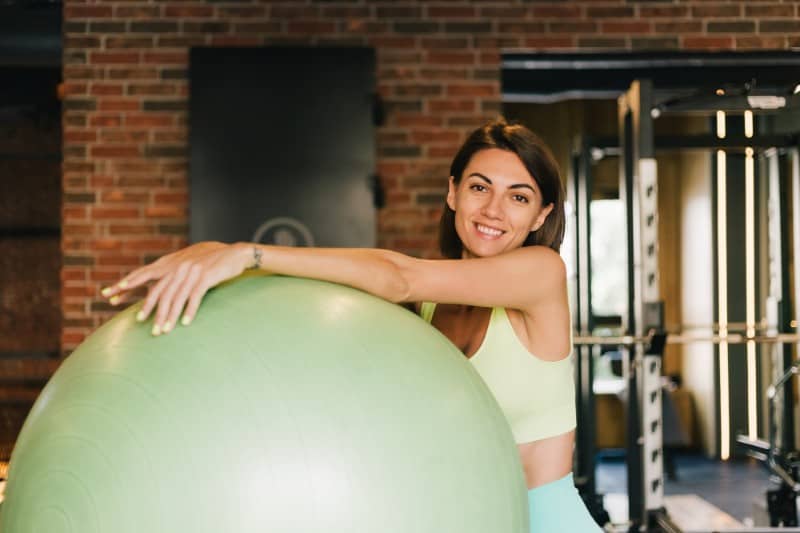You’ve probably seen the “huge balls” if you’ve recently visited a gym or watched a fitness program on television. You may have questioned the reason for the fuss. They can appear to be something from a playground, but don’t be fooled. One of the finest ways to improve your core and abs is by using these balls.
Because of this, the fitness sector has gotten on the ball bandwagon. According to the Idea Fitness Programs and Equipment Survey, 71 percent of IDEA businesses implemented ball group fitness courses, and 89 percent of IDEA businesses offered balls to their consumers.
Do you find it difficult to imagine that bouncing, rolling, or even sitting on a large inflatable ball will improve your fitness? Continue reading to find out how useful ball fitness may be.
Although they have recently become fairly popular, the ball—also known as a stability ball, fitness ball, Swiss ball, physio ball, etc.—has been around since the 1960s. Physical therapists utilized it at first to aid in rehabilitation.
But the ball has much more uses besides rehabilitation that makes it valuable and adaptable. It is a very affordable piece of exercise equipment that works your entire body while also enhancing your balance. With a ball, you can perform absolutely countless different workouts. And it can help both novice and experienced exercisers. Children and older people alike can use it.
Why is this piece of exercise gear so beneficial in a special way? It causes your body to balance itself while simultaneously working several muscles at once. This results in a difficult and highly effective workout. For instance, performing tricep extensions while lying on a bench is an excellent exercise, but it just targets the triceps. But if you do the identical maneuver on a stability ball, the situation becomes unstable. You use additional muscles to maintain your balance on the ball. That implies that even though your exercise time hasn’t increased, you are now exerting more effort and effectively receiving more for your money.
So, if you haven’t already started, now is the time to do so. You might believe that your routine already gives you all you need, but it’s likely that you spend the majority of your time exercising your lower body. Your core has to receive a lot of attention during your workout sessions because it stabilizes the rest of your body. Your performance in all activities, including mundane tasks like carrying groceries, is enhanced by having a strong core. Your core strength, balance, and posture can all be enhanced with the ball. Almost all exercises done on a ball target your core region. And yes, it can even assist you in achieving the coveted six-pack!
Make sure you select the appropriate size and stiffness before giving the ball a go. The exercise move will be more challenging the harder the ball is. As a result, beginners should generally select a softer ball (e.g. not overly inflated). Additionally, it’s critical to select the appropriate size based on your height. Height recommendations can be found from the ball’s manufacturer or local gym.
The ball can be utilized for a total body workout, as was already described. With the ball, you may exercise your legs, arms, chest, back, and abs. You can also train your heart by performing exercises like sitting jumping jacks. The exercises that can be performed with the stability ball are demonstrated in the examples below.
Chest Fly:
Your knees should be bent and your heels should be about two feet from the ball as you lay across it with your head and shoulders supported on the ball. Arms raised overhead, palms pointing away from you. Rotate your hands to face each other as you slowly split your arms in a circle, bending your elbows slightly as you do so. Repeat from the starting position.

Oblique Twist:
Start by lying down with the ball supporting your back. For support, place your hands behind your head. By steadily raising yourself up while lifting your shoulder blades off the ball, you can rotate your left shoulder toward your right hip. Never pull your neck too tight by using your hands to do so. Keep your elbows at your sides. Switch sides after going back to your starting location and repeating.

Squat Against Wall:
Standing with your feet hip-width apart and about a foot away from the wall, lean your back against a ball that has been placed against the wall. Keep your back straight at all times. Let the ball travel up your back while bending your knees until they are approximately 90 degrees apart. As you bend, keep your knees in front of your toes. Repeat from the starting position.

An exercise ball is a great option to help you get fit. It’s affordable and easy to keep at your home gym. Sometimes the less complicated types of exercise equipment have the best fitness results.
© 2016-2022 by Overweight.net, a LIVenture LLC. All rights reserved. No part of this document may be reproduced or transmitted in any form or by any means, electronic, mechanical, photocopying, recording, or otherwise, without prior written permission of LIVentures LLC.








